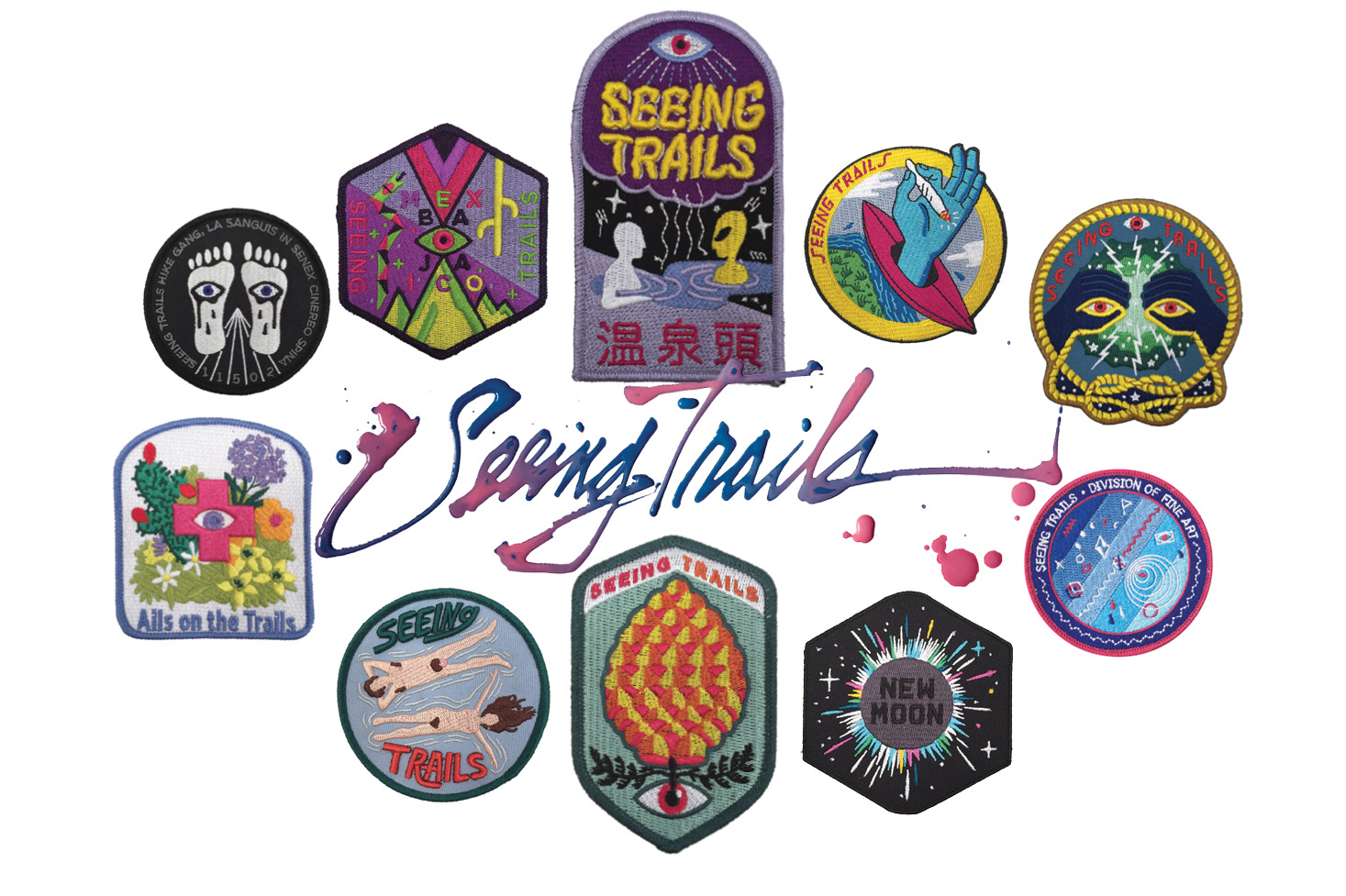It was another sunny day in Southern California as we drove up the Angeles Crest in an old stick shift Montero. The driver and owner of the navy blue SUV was Butchy Fuego, a founding member of Los Angeles-based hiking club Seeing Trails. We weren’t exactly sure of our final destination, but that’s half the fun of driving up into the mountains on the city’s best road.
Seeing Trails is much more than a hiking club. In fact, it’s not really a hiking club at all. There are no “meet up at this trail at this time on this day”-type gatherings. While Butchy started Seeing Trails to find hiking partners, the group soon evolved into something more unique: a collective of artists and outdoor enthusiasts. They quickly started putting on events and turned the backyard of a fellow member’s house in Lincoln Heights into their “lodge,” complete with a cabin/studio that bears a Seeing Trails sign modeled after those of the National Forest System.
In addition to hosting music events, cookouts, a book club called Cliff Notes and film screenings, Seeing Trails has gained recognition around Los Angeles for their patches and T-shirts. Designed by member and designer/animator Arthur Jones, the original creations include John Muir with a third eye, a naked couple floating in a river, and a hand that’s going over a waterfall in a kayak while holding a joint. His hallucinatory illustrations are a perfect contrast to the sterile outdoor patches of yesteryear, which are fitting for an outdoor club that’s trying to redefine what it means to be “outdoorsy.”
Butchy was getting ready for “Pass The Dutchy,” an extravagant 65-person dinner party with live music and a Lebanese feast prepared in cast iron dutch ovens cooked over coals. The event, which Fuego and the rest of the Seeing Trails crew planned and organized, took place at the Chilao campgrounds in the San Gabriel Mountains.
“We talk about hiking as art,” says Fuego. The members of Seeing Trails believe that to truly “See” our surroundings, we have to engage with the environment in ways that subvert the traditional. They look to people like Reinhold Messner, who talks about feeling and living the imaginary lines that he writes while climbing a new peak. They’re trying to start a dialogue that explains “the relationship between contemporary culture and the landscape in which it exists.”
As we finally reached a turn out en route to Mount Wilson, we got out of the car and talked a bit more about Seeing Trails, upcoming events and where he sees the whole thing going. But first, a hike.
This article was originally published in RANGE Magazine Issue Five.
